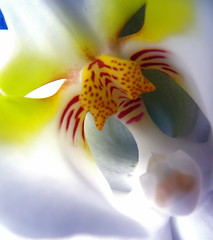Multiple Perspectives
I had the pleasure of chatting with Bill Liao today. We covered a lot of ground in 30 minutes, manuevering into alignment on the language of happiness and what thrivability is and looks like.
One of my takeaways from the conversation is the reminder of how critical multiple perspectives are. We discussed how some words have so many different meanings in them – like happiness, truth, justice, and beauty. For me these words are next to meaningless because they mean such different things to different people. Bill is a fan of etymology.
A whole. And parts which are whole in themselves. Multiple perspectives. Being able to hold many perspectives at the same time can feel paradoxical. Like a good zen nugget. Can we see the world from the perspective of a child? A tree? An atom? A brain wave? A diplomat? A starving mother? An entrepreneur? A convict? A farmer? An anthropologist? When we can hold this, we begin to understand the flows of exchange and demand, of gift and grace.
I have a game I play to step into multiple perspectives. I blogged about it here before.
In my coaching practice, when someone is inside something so much that it reduces their resourcefulness, we play a little zooming game. It is often as if we are looking through a microscope at what is before us. And seeing it from across the room or through someone else’s eyes, or from a different timespan or place altogether allows us to detach enough emotionally to find our resourcefulness again. This is about gaining perspective. 🙂
Another coaching tool, especially useful for when we have tensions with another person, is to step into different perspectives of the situation. What does it look like if you are in their position? What does it look like to a witness? What does it look like to you when you are in a different state of mind? What does it look like in the future after you a successfully resolve it? What does it look like to your mentor?
Bill shared a lovely story about an artist asking a biologist about viewing a flower. The artist presumes that because the biologist knows the internal workings of the flower, that the biologist can’t see the forest for the trees – can’t see the flower for its parts. The biologist replies, but no… I can both see the beauty of the flower and the beauty of the internal workings of the flower.
Being able to hold multiple perspectives gives us a richness of experience, a resourcefulness in our choicemaking, and a greater peace of mind.
How do you incorporate multiple perspectives into your work and play?
What tools do you use to engage multiple perspectives? What practices do you have around it?
And thank you for sharing your thoughts. It helps me expand my ability to perceive the world through multiple perspectives. Thank you.





